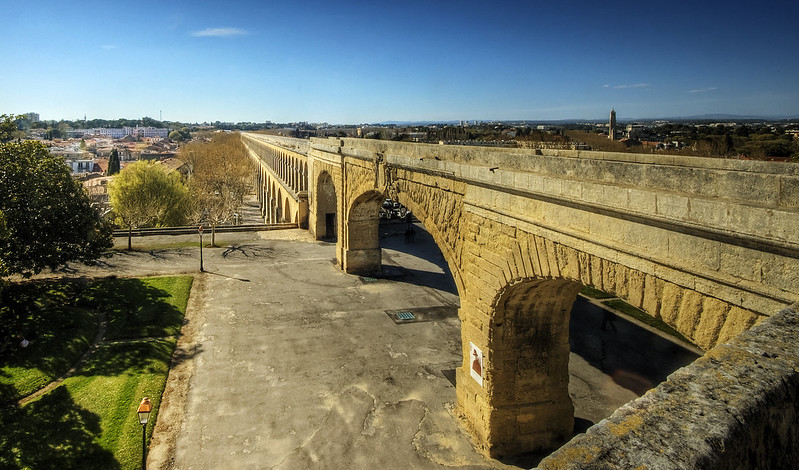The Aqueducts of Ancient Rome
Roman Aqueducts: What They Were
Source: Wolfgang Staudt
“Roman aqueduct” by Wolfgang Staudt is marked with CC BY 2.0.
The aqueducts, or waterways of ancient rome transferred freshwater up to 80 miles from springs, lakes, and underground bodies of water, to cities. They were made from tunnels, pipes, canals, and bridges, and were held up by arches. When they got to the cities, they were held in locations called castellums.
The water could be used for drinking, bathing, irrigation, or putting in fountains and monuments. For these to work, the engineers had to utilize gravity in the perfectly correct way. if it was too steep, then the water would wear out the waterway. If it were too gentle, then the water would stagnate and become undrinkable. Because of this, the water only had a slope of about a foot for every mile, sometimes going to nearly 100 miles. There were over 200 cities at the height of the Roman empire, and there were 11 aqueduct systems that connected to the capital alone. It is incredibly impressive that they managed to figure all of this out, over 2,000 years ago.
RELATED STORIES:
https://www.ncbi.nlm.nih.gov/pmc/articles/PMC7004096/
https://www.discovermagazine.com/planet-earth/aqueducts-how-ancient-rome-brought-water-to-its-people
https://kidsdiscover.com/quick-reads/roman-aqueducts-dawn-plumbing/
TAKE ACTION:















